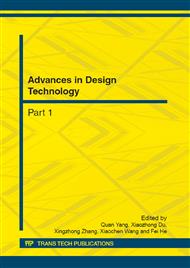p.378
p.382
p.388
p.395
p.399
p.407
p.419
p.426
p.433
Cab Conceptual Design for the Equipment System Used for Passenger Car Ergonomic Design and Evaluation
Abstract:
Ergonomics is an important validation content in vehicle product development. The traditional evaluation method of ergonomics adopts physical mockups or prototypes, which is very costly, and is inconvenient to modify, and usually cause prolonged development cycle-time. In this paper, in conjunction with enterprise’s requirements, an ergonomic validation equipment system, which has adjustable main parts, was developed. Firstly, requirements were analyzed, and target model cars ranges were determined, and ergonomic contents which can be validated using this equipment were clarified. The packaging characteristic of the passenger car was analyzed, and the reference fiducial marks system used for packaging design were determined. Based on the requirement of occupant accommodation, anthropometries of target population were statistically analyzed. By using revised SAE J1517 H-Point curves models, the drivers’ seating space was designed, as well as the requirement of the driver seat track travel. Based on the analysis of packaging data of passenger cars, and considering the possible changes, controls such as steering wheel, pedals, sticks, etc., were packaged.
Info:
Periodical:
Pages:
399-406
Citation:
Online since:
November 2012
Authors:
Keywords:
Price:
Сopyright:
© 2012 Trans Tech Publications Ltd. All Rights Reserved
Share:
Citation:


